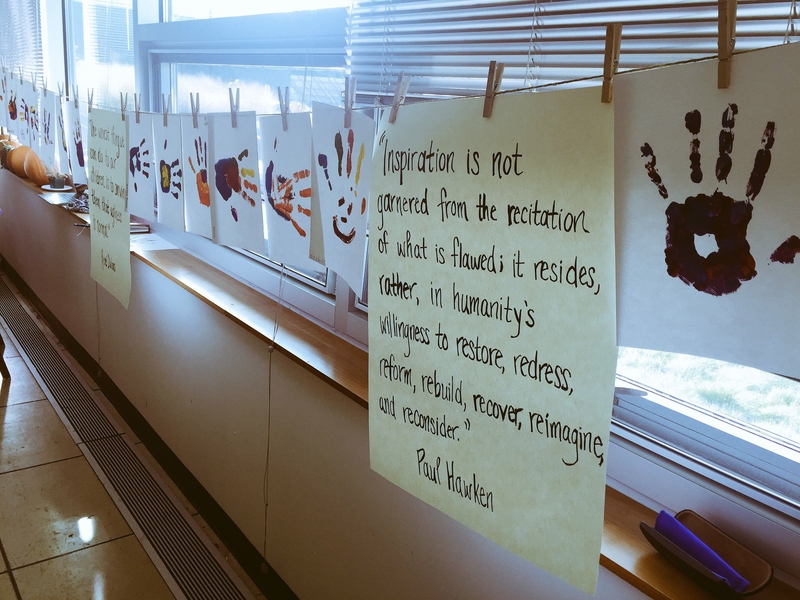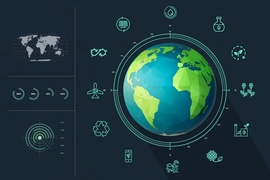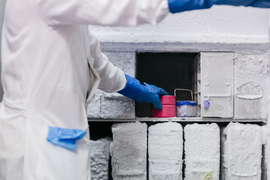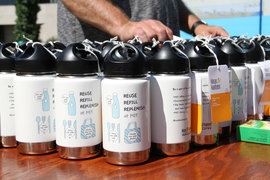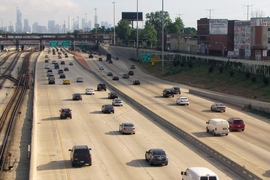Gregory Norris is an expert on quantifying firms’ impacts on the environment over the life cycles of their products and processes. His analyses help decision-makers opt for more sustainable, Earth-friendly outputs.
He and others in this field of life-cycle assessment (LCA) have largely gone about their work by determining firms’ negative impacts on the environment, or footprints, a term most people are familiar with. But Norris felt something was missing. What about the positive impacts firms can have by, for example, changing behaviors or creating greener manufacturing processes that become available to competitors? Could they be added to the overall LCA tally?
Introducing handprints, the term Norris coined for those positive impacts and the focus of MIT’s Sustainability and Health Initiative for NetPositive Enterprise (SHINE). SHINE is co-led by Norris and Randolph Kirchain, who both have appointments through MIT’s Materials Research Laboratory (MRL).
Positive impacts
“If you ask LCA practitioners what they track to determine a product’s sustainability, 99 out of 100 will talk about footprints, these negative impacts,” Norris says. “We’re about expanding that to include handprints, or positive impacts.”
Says Kirchain, “we’re trying to make the [LCA] metrics more encompassing so firms are motivated to make positive changes as well.” And that could ultimately “increase the scope of activities that firms engage in for environmental benefits.”
In a February 2021 paper in the International Journal of Life Cycle Assessment, Norris, Kirchain, and colleagues lay out the methodology for not only estimating handprints but also combining them with footprints. Additional authors of the paper are Jasmina Burek, Elizabeth A. Moore, and Jeremy Gregory, who are also affiliated with the MRL.
“By giving handprints a defendable methodology, we get closer to the ideal place where everything that counts can be counted,” says Jeff Zeman, principal of TrueNorth Collective, a consulting firm for sustainability. Zeman was not involved in the work.
As a result, Zeman continues, “designers can see the positive impact of their work show up in an organization’s messaging, as progress toward its sustainability goals, and bridge their work with other good actors to create shared benefits. Handprints have been a powerful influence on me and my team — and continue to be.”
How it works
Handprints are measured with the same metrics used for quantifying different footprints. For example, a classic metric for determining a product’s water footprint is the liters of water used to create that product. The same product’s water handprint would be calculated by determining the liters of water saved through a positive change such as instituting a new manufacturing process involving recycled materials. Both footprints and handprints are measured using existing life-cycle inventory databases, software, and calculation methods.
The SHINE team has demonstrated the impact of adding handprints to LCA analyses through case studies with several companies. One such study described in the paper involved Interface, a manufacturer of flooring materials. The SHINE team calculated the company’s handprints associated with the use of “recycled” gas to help heat its manufacturing facility. Specifically, Interface captured and burned methane gas from a landfill. That gas would otherwise have been released to the atmosphere, contributing to climate change.
After calculating both the company’s handprints and footprints, the SHINE team found that Interface had a net positive impact. As the team wrote in their paper, “with the SHINE handprint framework, we can help actors to create handprints greater than, and commensurate with, their footprints.”
Concludes Norris: “With this paper, we hope that work on sustainability will get stronger by making these tools available to more people.”
This work was supported by the SHINE consortium.
